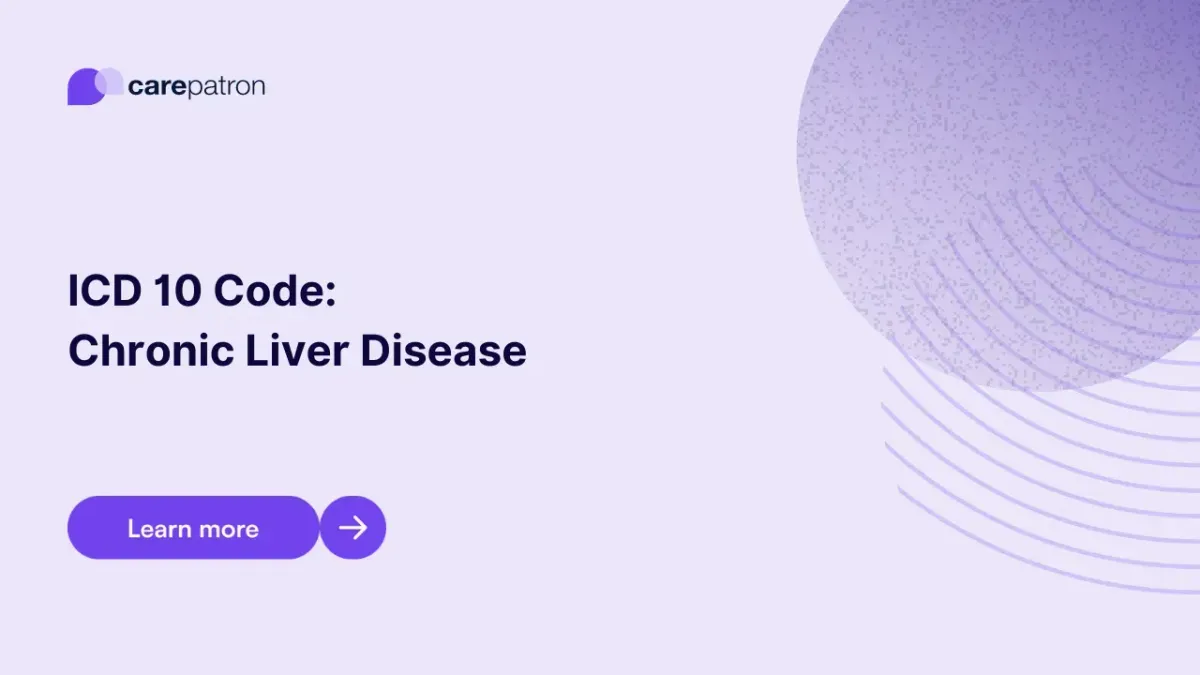
Chronic Liver Disease ICD-10-CM Codes | 2023
Read this short guide to learn about Chronic Liver Disease ICD codes you can use!
Use Code
Commonly asked questions
Symptoms include the following:
- Sudden, significant weight loss
- Fatigue
- Jaundice
- Muscle loss
- Build up of fluid in the belly
- Abdominal pain
- Abdominal swelling
- Loss of appetite
- Nausea
- Itching
- Gallstones
- Kidney failure
No. At best, it can be managed to prevent the liver from suffering further damage, but only if it’s detected early. If the disease is detected too late, liver damage is irreversible.
If healthcare professionals surmise that their patients are at risk of Chronic Liver Disease, they need to recommend making lifestyle changes involving cutting down or completely stopping alcohol consumption, having a balanced diet, cutting down on weight, and getting vaccinated for Hepatitis.
EHR and practice management software
Get started for free
*No credit card required
Free
$0/usd
Unlimited clients
Telehealth
1GB of storage
Client portal text
Automated billing and online payments
